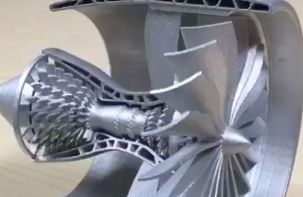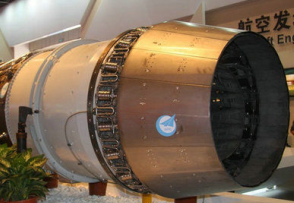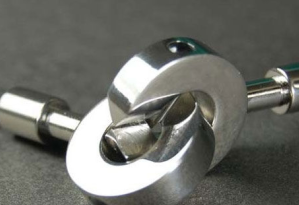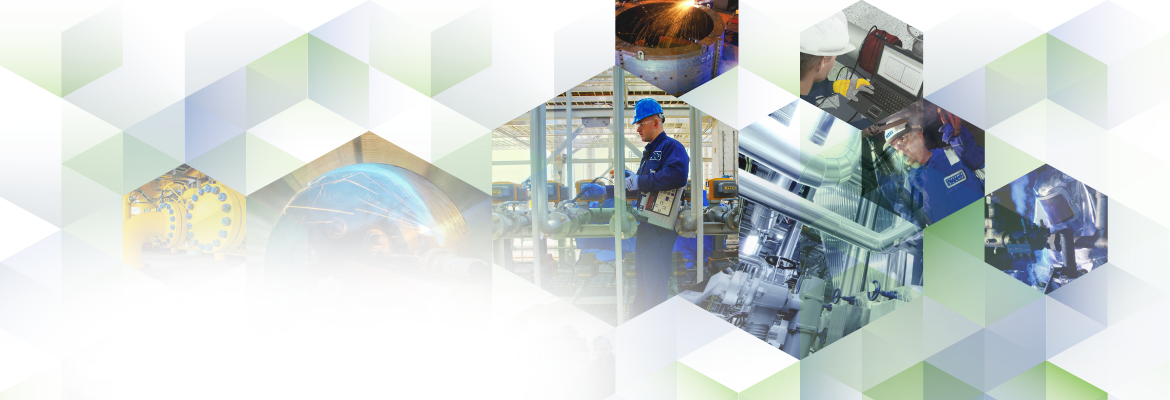Aerospace
High-temperature alloys are also called heat-strength alloys. According to the matrix, the materials can be divided into three categories: iron-based nickel-based and chromium-based. According to the production method, it can be divided into deformed superalloys and cast superalloys.
It is an indispensable material in the aerospace field. It is a key material for high-temperature parts of aerospace and aviation manufacturing engines. It is mainly used to manufacture combustion chambers, turbine blades, guide blades, compressors and turbine disks, turbine casings and other parts. The operating temperature range is 600 ℃ -1200 ℃. The stress and environmental conditions vary with the parts where the parts are used. There are strict requirements on the mechanical, physical and chemical properties of the alloy, which are the decisive factors for the performance, reliability and life of the engine. . Therefore, superalloys are one of the key research projects in the aerospace and defense fields of developed countries.
The main applications of high-temperature alloys are:
1. High-temperature alloy for combustion chamber
aviation turbine engine combustion chamber (also called flame tube) is one of the key high-temperature components. Due to fuel atomization, oil and gas mixing and other processes are carried out in the combustion chamber, the temperature in the combustion chamber can reach 1500 ℃-2000 ℃, the temperature of the inner wall of the combustion chamber reaches 1100 ℃, while also subject to thermal and gas stress. High thrust-to-weight ratio engines mostly use annular combustion chambers, which are short in length and high in heat capacity. The maximum temperature in the combustion chamber reaches 2000 ° C. The temperature of the chamber wall reaches 1150 ° C after gas film or steam evaporation cooling. A large temperature gradient between each part will generate thermal stress, and it will rise and fall sharply when the working state changes. The material will experience thermal shock and thermal fatigue load, and distort deformation, cracks and other failures. Generally, the combustion chamber is made of sheet alloy, and the technical requirements according to the specific parts use conditions are summarized as follows: the use of high-temperature alloys and gas conditions has certain resistance to oxidation and gas corrosion; it has certain instantaneous and long-term strength, thermal fatigue performance, Low expansion coefficient; sufficient plasticity, weldability to ensure processing, forming and connection; good thermal stability under thermal cycle to ensure reliable operation during the life cycle.
 |  |  |
· MA956 alloy porous layer plate The, porous layer plate was made of HS-188 alloy thin plate in the early stage through photography, corroded, grooved and perforated, and made by diffusion connection. The inner layer can be made into an ideal cooling channel according to the design requirements. This structure cooling requires only 30% of the cooling gas of traditional film cooling, which can improve the engine thermal cycle efficiency, reduce the actual heat capacity of the combustion chamber material, reduce weight, and increase Push the weight ratio. There are still key breakthroughs in technology before they can be put into practical use. The use of MA956 to make porous laminates is a new generation of combustor materials introduced by the United States and can be used at 1300 ° C.
· Application of ceramic composite materials in the combustion chamber The,United States has started the feasibility verification of ceramics for gas turbines since 1971. In 1983, some American groups engaged in the development of advanced materials have formulated a series of performance indicators for gas turbines used in advanced aircraft. These indicators are: increase the turbine inlet temperature to 2200 ° C; operate under stoichiometric combustion conditions; they will be applied to these The density of the parts is reduced from 8g / cm3 to 5g / cm3; the cooling of the parts is eliminated. To meet these requirements, in addition to single-phase ceramics, the materials studied include graphite, metal-based and ceramic-based composite materials, and intermetallic compounds. The ceramic matrix composite (CMC) has the following advantages: the ceramic material has a much smaller expansion coefficient than the nickel-based alloy, and the coating is easily peeled off. Making the ceramic composite material with the middle metal felt can overcome the shortcomings of flaking, which is the development direction of the material of the combustion chamber. This kind of material uses 10% -20% cooling air to use the metal back to insulate. The temperature is only about 800 ℃, and the heating temperature is much lower than the divergent cooling and gas film cooling. In the V2500 engine, cast high-temperature alloy B1900 + ceramic coating protective tiles are used. The development direction is to replace B1900 (with ceramic coating) tiles with SiC-based composite materials or anti-oxidation C / C composite materials. The ceramic matrix composite material is a development material for the engine combustion chamber with a thrust-to-weight ratio of 15-20. The operating temperature is 1538 ° C-1650 ° C. It is used for flame tubes, floating wall sheets and afterburners.
2. High temperature alloy for turbine part
The aeroengine turbine blade is one of the most severe components of the aeroengine that bears the most severe temperature load and the worst working environment. It has to bear very large and complex stresses at high temperatures, so its material requirements are very strict.
The high-temperature alloys of turbine blades of aeroengines are further divided into:
· High-temperature alloy guides for guides are one of the parts that are subject to the greatest thermal shock of turbine engines. When the combustion chamber has uneven combustion, the first-stage guide vane is subjected to a large heat load, which is the main reason for the damage of the guide vane. Its operating temperature is about 100 ℃ higher than that of turbine blades. The difference is that the stationary parts are not subject to mechanical load. Generally, thermal stress, distortion, thermal fatigue cracks and local burns caused by rapid temperature changes are easy to occur. The guide vane alloy should have the following properties: sufficient high temperature strength, long-term creep performance and good thermal fatigue performance, high oxidation resistance and thermal corrosion resistance, resistance to thermal stress and vibration, bending deformation ability, good casting process molding Performance and solderability, coating protection performance. At present, advanced engines with high thrust-to-weight ratio mostly use hollow casting blades, and select orientation and single crystal nickel-based superalloys. High thrust-to-weight ratio engines use high temperatures up to 1650 ° C-1930 ° C and need to be protected by thermal insulation coatings. The use temperature of the blade alloy under cooling and coating protection conditions is above 1100 ℃, which puts new and higher requirements on the temperature, density and cost of the guide blade material used in the future.
· High temperature alloy for turbine working blades,Turbine blades are the key heat-carrying rotating parts of aero engines. Their working temperature is lower than that of guide vanes by 50 ° C-100 ° C. They are subject to great centrifugal stress, vibration stress, thermal stress, air flow erosion and other effects during rotation, and the working conditions are poor. The high thrust-to-weight ratio engine requires that the life of the hot end components be greater than 2000h. Therefore, the turbine blade alloy should have high creep resistance and permanent fracture strength at service temperature, good high and medium temperature comprehensive properties, such as high, low cycle fatigue, cold and hot fatigue, sufficient plasticity and impact toughness, resistance Notch-sensitive performance; high oxidation resistance and corrosion performance; good thermal conductivity, as low a linear expansion coefficient as possible; good casting process performance; long-term structural stability, no TCP phase precipitation at use temperature. The applied alloys go through 4 stages; the deformed alloys have GH4033, GH4143, GH4118, etc .; the casting alloys have K403, K417, K418, K405, directional solidified gold DZ4, DZ22, single crystal alloys DD3, DD8, PW1484, etc. Has been developed to the third generation single crystal alloy. China's single crystal alloys DD3 and DD8 are used in China's turbines, turbofan engines and helicopters, and shipborne engines.
3.The high-temperature alloy
turbine disk for the turbine disk is the rotating bearing member with the greatest stress on the turbine engine. The operating temperature of the wheel flange of the thrust-to-weight ratio 8 and 10 engines reaches 650 ° C and 750 ° C, the wheel center temperature is about 300 ° C, and the temperature difference is large. During normal rotation, it drives the blade to rotate at high speed, and bears the combined effects of maximum centrifugal force, thermal stress, and vibration stress. Every time you start, parking is a cycle, wheel center. The throat, the bottom of the groove, and the rim are all subjected to different compound stresses. The alloy is required to have the highest yield strength, impact toughness, and no-notch sensitivity at the use temperature; low linear expansion coefficient; certain oxidation resistance and corrosion resistance; good cutting performance.
4.High temperature alloy for aerospace
High-temperature alloys used in liquid rocket engines are used in thrust chambers as combustor injector panels; turbo pump bends, flanges, graphite rudder fasteners, etc. High-temperature alloys used in liquid rocket engines are used in thrust chambers as fuel chamber injector panels; turbo pump bends, discs, graphite rudder fasteners, etc. China's YF73 and YF75 are made of GH3030 alloy wire braided mesh after 18 layers of overlap and then rolled, sintered into porous divergent cooling panels to make combustion chamber injection panels. The turbine rotor began to use GH1040 and GH2038A, and was then forged with GH4169 as a whole, machined from a roulette wheel, and electrolytically machined from blades. Comparing the performance of GH1040 and GH4169 alloys, it can be seen that the material requirements of the turbine rotor of the long-range missile engine meet the requirements at 800 ℃ 398 MPa for 20 min, and the GH4169 can reach 30 min. The organizational performance is stable; GH1040 can only maintain 6 min at 800 294 MPa and is not competent Claim. More favorable: from -253 ℃ to room temperature, its strength increases from 392MPa to 400MPa. The plasticity is basically unchanged, and the low temperature impact toughness is better. Therefore, GH4169 is used as a material for turbine rotors, shafts, bushings, fasteners and other important load-bearing parts. The main rotor materials of the liquid rocket engine in the United States are the intake pipe, turbine blades and wheel disc. Most of China adopts GH1131 alloy, and the turbine blades depend on the operating temperature. Inconelx, Alloy713c, Astroloy and Mar-M246 should be used in succession; wheel materials include Inconel718 and Waspaloy. China uses GH4169 and GH4141 integral turbines, and the engine shaft uses GH2038A.
Small liquid rockets with attitude control of missiles and launch vehicles generally have low thrust (0.02N-2000N), pulse start times of 100,000 times, minimum pulse width of several milliseconds, and total working time of 5-10 years, requiring high reliability The nozzle extension of the nozzle adopts a single layer structure with radiant cooling. The structure is simple, the weight is light, and the combustion temperature is high. The thrust chamber generally selects the niobium-based alloy NbHf10-1. To improve the performance, the surface is sprayed with an anti-oxidation coating. The operating temperature is 1100 ℃ -1600 ℃, usually using liquid film cooling to protect the inner wall of the combustion chamber. The United States uses a rhenium-iridium alloy combustion chamber + anti-oxidation coating, which can eliminate liquid film cooling and significantly improve performance. Successively developed 22N 66N and 445N attitude engine combustion chambers. After being put into use, the satellite and spacecraft effective load increased by 20㎏-100㎏ . The new-generation carrier rocket engine needs to develop and apply a new type of high-temperature alloy that greatly reduces the structural weight, and replaces some nickel-based alloys with Ti-Al-based alloys. GH4169 is used to manufacture pump casing and low expansion alloy. With the continuous development of the aerospace industry, in order to meet the needs of various flight missions, higher requirements have been placed on materials in the field of superalloys.

